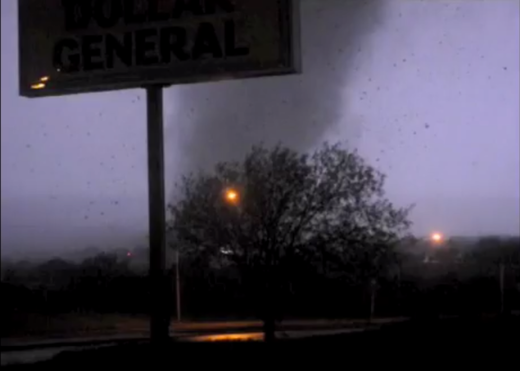
In April 2011, there were 50 confirmed tornadoes in Oklahoma, breaking a record for that month previously set with 40 in 1957. This April, there were 52 tornadoes in the state. So do those 102 in two years mean April bypasses May as the month for the biggest threat of twisters in Oklahoma?
No, say the experts as they look over the official state records for tornadoes that date to 1950.
Gary McManus, of the Oklahoma Climatological Survey, said that to see if there is a change in our primary tornado season, you really have to look at the changes in the ingredients that form tornadoes. The weather patterns that have to come together are complex.
"With severe storms and tornadoes, it's all driven by very small-scale weather features," said Rick Smith of the National Weather Service, Norman Forecast Office, "and whether we have four tornadoes or 50 or 100 in a month can be determined by the exact location and behavior of storms on one day, or even just a few hours."
A closer look
There have been more tornadoes during April than May in the past two years and in five of the past eight years.
However, weather experts look to specifics rather than just the numbers.
"It could be a byproduct of drought, the La Nina/El Nino oscillation, or just plain short-term natural variability," McManus said. "Now this year, April was more like May and May was more like June, climatologically speaking, and the types of storms we saw seemed to follow suit.
"Last year, the drought was intensifying in western Oklahoma during April and the storms were all forming in eastern Oklahoma. I'd have to ask, 'Did the drought and heat in western Oklahoma help fuel the dryline in eastern Oklahoma, and also limit tornadoes during May?'"
And when looking at the numbers, consider other changes such a greater opportunity for confirming tornadoes.
For example, McManus said, years ago tornadoes striking near population centers were much more likely to be counted than those in some rural areas.
"These days, a growing number of chasers track down each and every tornado that might have touched down anywhere in the state," he said.
"And the NWS meteorologists now split tornado tracks into multiples, whereas in the past they might have been counted as one tornado."
With social media and smartphones that take pictures and video, it's very unusual to have a tornado - even a brief weak one - occur without weather officials knowing about it, Smith said.
Any month
As much as anything, the back-to-back records for April may serve as a reminder that planning and preparation should not focus on the fact that May is the primary month for Oklahoma twisters.
In February 2009, an EF4 tornado struck the Lone Grove area, resulting in eight deaths and damaging more than 300 homes. The same rare winter storm system damaged homes in Edmond and Oklahoma City.
In 2011, two people were killed by an EF3 tornado that struck April 14 at Tushka in Atoka County.
This year, six people died in Woodward during the April 15, EF3 tornado, and another 29 were injured, Smith said. About 20 people suffered minor injuries during the April 13 Norman tornado.
"When I talk to people about tornadoes, I remind them that storms don't have calendars or clocks, and that it doesn't matter what month it is. If you get the right ingredients coming together, you can have tornadoes, and it doesn't matter if it's May or November," Smith said.
"Tornado season in Oklahoma starts on Jan. 1st and ends on December 31st. I usually clean out my storm shelter whenever we see the first real severe weather threat of the year, regardless of what month it is. If we try and maintain a basic level of readiness year-round, it won't take much time or energy to act when we need to."



Reader Comments
to our Newsletter